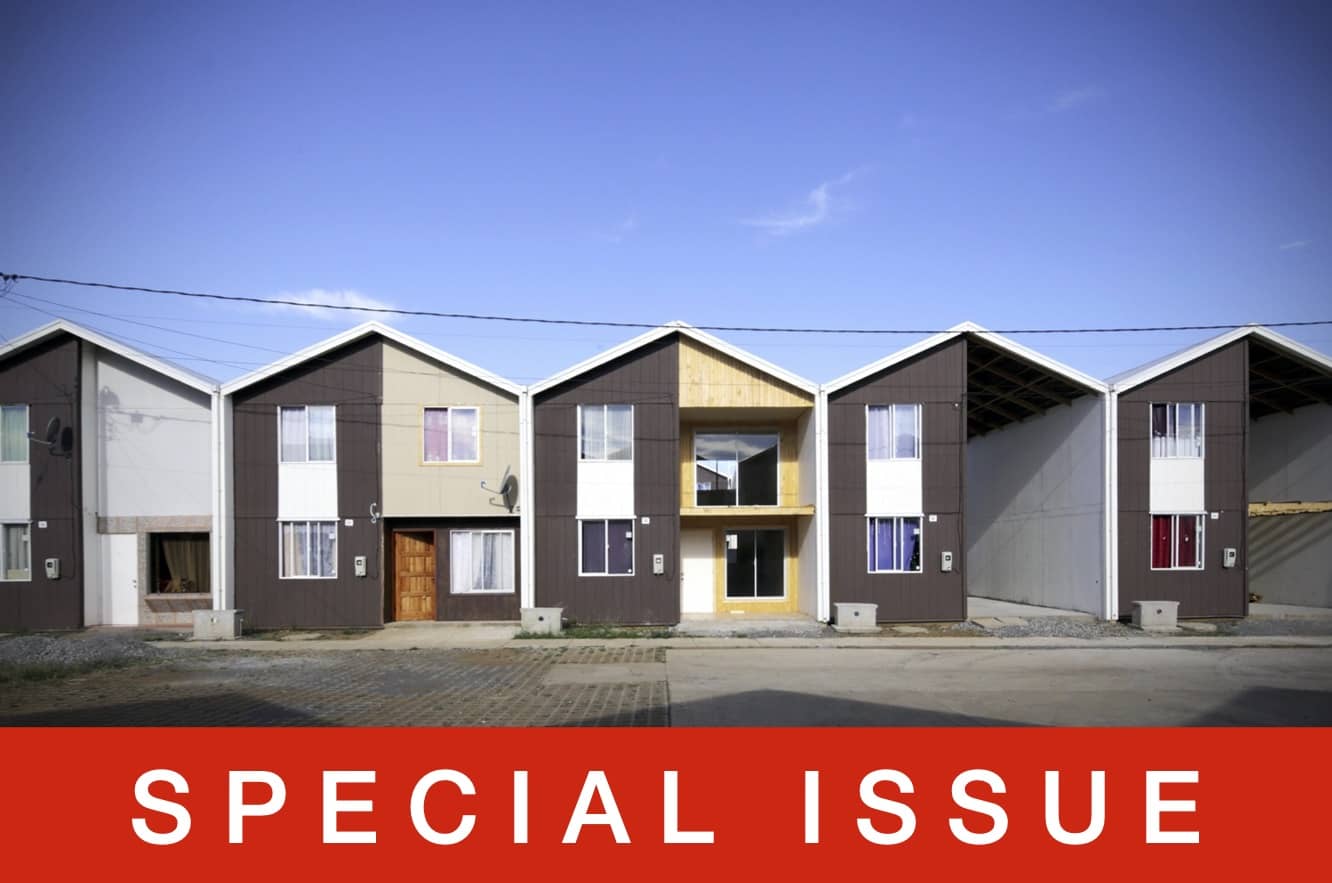
www.buildingsandcities.org/journal-content/special-issues/housing-adaptability2.html
Housing Adaptability

This special issue advances the understanding and implementation of housing adaptability and flexibility across a range of issues: spatial, social, environmental, economic, time and multi-use and multiuser adaptability.
The adaptability of our homes is a social, emotional and cultural issue as much as a technical or construction challenge. The need for housing adaptability and flexibility became apparent during the pandemic, when an increasing range of activities, such as working, studying, home-schooling, exercising etc., occurred in homes that were never designed for this purpose and thus ill-suited. However, the need for adaptability and flexibility is also necessary at other times during a building's lifespan. Dwellings need to accommodate new working practices promoted by digitisation, or a changing demographic (ageing population, migration, fluctuation of household members).
Guest editors: Sofie Pelsmakers and Elanor Warwick
This special issue explores how to best adapt spaces to accommodate different and changing user needs (on a daily, seasonal, long term basis) and user generations. The papers in this special issue explore:
- Concepts of adaptability and flexibility in housing and their implications
- The potential for existing and new housing to become more adaptable over time
- Drivers and barriers to implementing housing adaptability
- How residents may overcome unadaptable spaces
- The benefits and unintended consequences
- What shapes inhabitants' needs, perceptions and expectations for adaptable spaces
The papers in this special issue challenge policymakers, planners, clients, developers and designers to make new and existing dwellings more adaptable. This special issue makes clear both the needs and benefits that accrue from providing adaptability in housing. Moreover, it is financially viable to do so. When embarking on retrofitting strategies to mitigate greenhouse gas emissions from the housing stock, it would be wise and cost-effective to include adaption in retrofit programmes. But there is an equal justification for making the housing stock more widely adaptable - especially given the decreasing size of dwellings and changing nature of work and education. A home's adaptive capacity supports an individual's and community's resilience when faced with different life events and their associated disruptions and consequences.
Table of contents
Housing adaptability: new research, emerging practices & challenges (Editorial)
S. Pelsmakers & E. Warwick
Sharing a home under lockdown in London
F. Blanc & K. Scanlon
Adapting owner-occupied dwellings in the UK: lessons for the future
T. Hipwood
Architects' 'enforced togetherness': new design affordances of the home
E. Marco, M. Tahsiri, D. Sinnett & S. Oliveira
Inclusive Living: ageing, adaptations and future-proofing home
V. McCall
Balconies as adaptable spaces in apartment housing
T. Peters & S. Masoudinejad
The use of apartment balconies: context, design and social norm
M. Smektała & M. Baborska-Narożny
Residents' views on adaptable housing: a virtual reality-based study
J. Tarpio & S. Huuhka
Lack of adaptability in Brazilian social housing: impacts on residents
S.B. Villa, P.B. Vasconcellos, K.C.R. de Bortoli, & L.B. de Araujo
Commentaries
Housing Adaptability: Some Past Lessons
A. Rabeneck
Key Lessons for Adaptable Housing
F. Holliss
Launch Events - Videos
To promote a wider international dialogue, an international virtual event was hosted by a leading UK building industry think tank, The EDGE, on 27 February 2023 (chaired by John Palmer, UK Department for Levelling Up, Housing and Communities).
Speakers
Introduction to Adaptable Housing
Elanor Warwick (Clarion Housing Group)
The Value of Adaptability to Residents
Jyrki Tarpio (Tampere University)
Housing Adaptability: Design Strategies
Astrid Smitham (Apparata Architects)
Balcony Design: Do We Know What Inhabitants Need?
Marta Smektala (Wroclaw University of Science & Technology)
Respondents
Three key respondents from industry, government and academe briefly consider the whether and how adaptability in housing can be fostered:
Kirk Archibald (Director, Think Three)
Amy Burbidge (Head of the Master Development and Design Team, Homes England)
Philip Graham (University of Cambridge)
Latest Peer-Reviewed Journal Content
Youth engagement in urban living labs: tools, methods and pedagogies
N Charalambous, C Panayi, C Mady, T Augustinčić & D Berc
Co-creating urban transformation: a stakeholder analysis for Germany’s heat transition
P Heger, C Bieber, M Hendawy & A Shooshtari
Placemaking living lab: creating resilient social and spatial infrastructures
M Dodd, N Madabhushi & R Lees
Church pipe organs: historical tuning records as indoor environmental evidence
B Bingley, A Knight & Y Xing
A framework for 1.5°C-aligned GHG budgets in architecture
G Betti, I Spaar, D Bachmann, A Jerosch-Herold, E Kühner, R Yang, K Avhad & S Sinning
Net zero retrofit of the building stock [editorial]
D Godoy-Shimizu & P Steadman
Co-learning in living labs: nurturing civic agency and resilience
A Belfield
The importance of multi-roles and code-switching in living labs
H Noller & A Tarik
Researchers’ shifting roles in living labs for knowledge co-production
C-C Dobre & G Faldi
Increasing civic resilience in urban living labs: city authorities’ roles
E Alatalo, M Laine & M Kyrönviita
Co-curation as civic practice in community engagement
Z Li, M Sunikka-Blank, R Purohit & F Samuel
Preserving buildings: emission reductions from circular economy strategies in Austria
N Alaux, V Kulmer, J Vogel & A Passer
Urban living labs: relationality between institutions and local circularity
P Palo, M Adelfio, J Lundin & E Brandão
Living labs: epistemic modelling, temporariness and land value
J Clossick, T Khonsari & U Steven
Co-creating interventions to prevent mosquito-borne disease transmission in hospitals
O Sloan Wood, E Lupenza, D M Agnello, J B Knudsen, M Msellem, K L Schiøler & F Saleh
Circularity at the neighbourhood scale: co-creative living lab lessons
J Honsa, A Versele, T Van de Kerckhove & C Piccardo
Positive energy districts and energy communities: how living labs create value
E Malakhatka, O Shafqat, A Sandoff & L Thuvander
Built environment governance and professionalism: the end of laissez-faire (again)
S Foxell
Co-creating justice in housing energy transitions through energy living labs
D Ricci, C Leiwakabessy, S van Wieringen, P de Koning & T Konstantinou
HVAC characterisation of existing Canadian buildings for decarbonisation retrofit identification
J Adebisi & J J McArthur
Simulation and the building performance gap [editorial]
M Donn
Developing criteria for effective building-sector commitments in nationally determined contributions
P Graham, K McFarlane & M Taheri
Join Our Community

The most important part of any journal is our people – readers, authors, reviewers, editorial board members and editors. You are cordially invited to join our community by joining our mailing list. We send out occasional emails about the journal – calls for papers, special issues, events and more.
We will not share your email with third parties. Read more



Latest Commentaries
COP30 Report
Matti Kuittinen (Aalto University) reflects on his experience of attending the 2025 UN Conference of the Parties in Belém, Brazil. The roadmaps and commitments failed to deliver the objectives of the 2025 Paris Agreement. However, 2 countries - Japan and Senegal - announced they are creating roadmaps to decarbonise their buildings. An international group of government ministers put housing on the agenda - specifying the need for reduced carbon and energy use along with affordability, quality and climate resilience.
Building-Related Research: New Context, New Challenges
Raymond J. Cole (University of British Columbia) reflects on the key challenges raised in the 34 commissioned essays for Buildings & Cities 5th anniversary. Not only are key research issues identified, but the consequences of changing contexts for conducting research and tailoring its influence on society are highlighted as key areas of action.